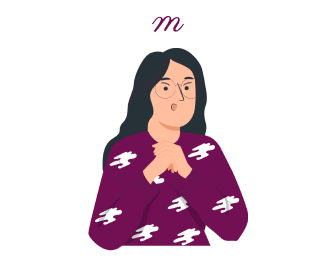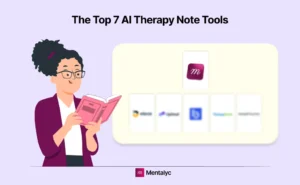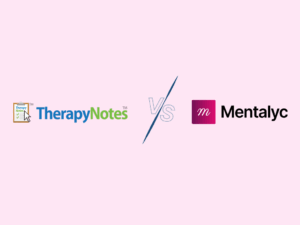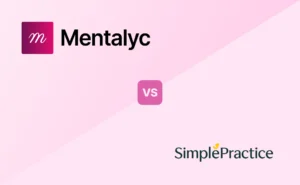A significant shift in the field of psychotherapy was the transition from traditional in-person group therapy sessions to online group therapy. Accelerated (and in many cases, required) by the COVID-19 pandemic, online group therapy expanded opportunities for therapists to provide support and treatment to a much larger audience. This article explores how psychotherapists can effectively facilitate online group therapy sessions, including types of platforms, creative ideas to engage participants, and essential tips for success.
Choosing the Right Platform for Online Group Therapy
The success of online group therapy relies on selecting an appropriate platform. Therapists must consider security, ease of use, accessibility, and compatibility with their therapeutic approach. Here are some platforms therapists may consider:
Zoom for Online Group Therapy Sessions
Zoom is one of the most popular video conferencing platforms, known for its robust security features, including end-to-end encryption. It offers breakout rooms for smaller group discussions, screen sharing, chat, and a user-friendly interface.
Microsoft Teams for Virtual Group Therapy Sessions
Microsoft Teams provides a secure environment with features like screen sharing, chat, and integration with Microsoft Office applications. It’s an excellent choice for therapists who use Microsoft products.

New! Transfer your notes to EHR with a single click. No more copy-pasting.
Google Meet for Group Therapy Online
Google Meet offers simplicity and integration with Google Workspace, and it’s accessible across various devices. It’s known for its reliable video quality.
Doxy.Me
Doxy.me provides a secure and user-friendly way for therapists to conduct remote video meetings with up to twelve participants using the group call feature.
Note: For therapists handling sensitive client data, platforms like Doxy.me, TheraNest, and SimplePractice are designed to meet strict privacy regulations. These platforms prioritize confidentiality. Services like BetterHelp and Talkspace specialize in online therapy, offering comprehensive platforms for therapists to securely conduct group sessions.
Importance of Using a HIPAA-Compliant Platform for Conducting Online Group Therapy.
It’s essential to use a HIPAA-compliant platform when conducting online group therapy. HIPAA, which stands for the Health Insurance Portability and Accountability Act, is a U.S. federal law designed to safeguard clients’ sensitive health information and ensure their privacy. This law extends to therapists and other mental health professionals who handle protected health information (PHI) in their practice.
Here are several key reasons why using HIPAA-compliant platforms is essential when conducting online group therapy sessions:
Client Confidentiality and Privacy in Online Group Therapy
When conducting group therapy, participants often share personal and sensitive information about their mental health and life experiences. Using a HIPAA-compliant platform ensures this information remains secure.
Legal Compliance
Non-compliance with HIPAA regulations can result in severe penalties, including fines and legal actions. Mental health professionals have a legal obligation to protect their clients’ PHI, and using a non-compliant platform may lead to violations.
Trust and Ethics
Establishing trust is critical for effective group therapy. Participants must be confident that their personal information is being handled in a secure and compliant manner.
Data Breaches and Cyber Threats
HIPAA-compliant platforms are designed with robust security measures to protect PHI from unauthorized access, data breaches, and cyberattacks. This ensures the safety of sensitive client information.
Ethical Boundaries
Using non-compliant platforms may inadvertently expose client information to third parties, which breaches ethical boundaries and compromises the therapeutic relationship.
Regulatory Requirements
Apart from HIPAA, many state and international laws and regulations govern the protection of client data. Using a HIPAA-compliant platform helps therapists meet not only federal but also state-specific legal requirements for data protection.
Patient Consent and Informed Choice
When choosing a platform, therapists must inform their clients about the platform’s level of security and privacy protection. This allows clients to make an informed choice about their participation and provides transparency regarding the protection of their PHI.
Professional Reputation
In the age of online reviews and information sharing, a therapist’s professional reputation can be affected by any perceived breach of confidentiality or data insecurity. Using HIPAA-compliant platforms not only protects clients but also safeguards the therapist’s professional standing.
Peace of Mind
Knowing a platform is HIPAA-compliant offers therapists peace of mind, allowing them to focus on clients’ well-being and the therapy process itself – instead of worrying about data security problems.
Ultimately, platform choice should align with a therapist’s specific needs, ensuring a safe and effective space for group therapy sessions.
Creative Ideas for Engagement During an Online Group Therapy Session
Facilitating group therapy sessions online presents unique challenges compared to in-person group meetings. To keep participants engaged and foster a supportive environment, therapists can implement creative ideas and techniques.
Start with an icebreaker and check-in
Always begin each session with a brief icebreaker or check-in activity to help participants feel more comfortable and connected. Sharing a personal story or answering a thought-provoking question can set a positive tone for the session.
Utilize multimedia to Enhance Virtual Group Therapy
Incorporate videos, music, slides, or images to enhance discussions and evoke emotions. For example, you can use a short video clip to prompt a group discussion or share calming music during relaxation exercises.
Use virtual whiteboards and interactive tools
Platforms like Zoom offer virtual whiteboards and interactive tools that enable participants to collaborate in real time. Therapists can use these features for group exercises, brainstorming, or collaborative artwork.
Breakout rooms can be useful!
Divide larger groups into smaller breakout rooms for more intimate discussions or activities. Assign specific topics or tasks to each group, and then reconvene to share insights.
Include creative writing and journaling
Encourage participants to keep digital journals or engage in creative writing exercises between sessions. Sharing their thoughts and feelings through writing can promote self-reflection and group discussion.
Lead mindfulness or meditation exercises
Practice guided mindfulness or meditation sessions during each group therapy session to help participants manage stress and anxiety while fostering a sense of unity within the group.
Invite guest speakers and experts for Virtual Group Therapy Sessions
Ask guest speakers or experts to join sessions virtually and share their knowledge on relevant topics. This can bring fresh perspectives and insights to the group.
Incorporate virtual art and music therapy
Ancillary therapies encourage participants to create and share artwork or music. These creative outlets can be powerful tools for emotional expression and healing.
Tips for Successful Online Group Therapy Sessions
Facilitating effective online group therapy sessions requires a combination of technical skills, therapeutic expertise, and a deep understanding of group dynamics. Here are some tips to ensure your group is a success:
- Ensure all technical aspects are in order before the session. Test your equipment, internet connection, and platform functionality to prevent disruptions during the session.
- Set clear guidelines for the group, including rules for confidentiality, respectful communication, and participation expectations. Address any potential issues or concerns upfront.
- Be mindful of group size. Smaller groups can foster more intimate discussions, while larger groups may require stricter facilitation. Pay attention to group dynamics and address conflicts promptly.
- Practice active listening to ensure that every participant feels heard and valued. Encourage group members to engage in empathic and active listening as well.
- Establish a system for participants to signal when they want to speak and be prepared to mute or unmute participants as necessary.
- Create an inclusive environment where all participants feel welcome and comfortable sharing. Avoid favoritism and ensure that everyone has an opportunity to participate.
- Allocate sufficient time for each session segment, such as check-ins, discussions, and activities. Stay on schedule to respect participants’ time commitments. Avoid going overtime.
- Encourage participants to use virtual reactions (e.g., thumbs up, applause) to provide feedback and support.
- Be very mindful of participants’ emotional states and intervene if someone appears distressed or in crisis. Have a plan in place for addressing emergencies.
- Stay updated on the latest developments in online therapy and seek training if necessary.
- Prioritize self-care to avoid burnout and maintain your well-being.
Specific Steps for the Online Group Therapy Session
Here are specific steps for facilitating a successful online group therapy session:
Prepare
- Select a secure and HIPAA-compliant video conferencing platform for online group therapy sessions.
- Ensure you and all group members are familiar with the platform and can access it without technical problems.
- Send session schedules and reminders, including links to the online meeting, well in advance of the scheduled session.
Create the Group Rules and Guidelines
- Define clear guidelines for online participation, including muting when not speaking, respecting speaking turns, and maintaining confidentiality.
- Remind participants of the importance of maintaining confidentiality in the online environment.
Develop an Online Session Agenda
- Determine the topics or activities for each online session, aligning them with the group’s goals.
- Allocate time for introductions, discussion, activities, and feedback, considering potential online fatigue.
Begin the Online Session – On Time!
- Start with an icebreaker activity or a brief check-in to help participants feel comfortable and connected.
- Discuss the group’s guidelines and the importance of confidentiality. Ask for feedback and/or questions.
Facilitate the Online Discussion
- Foster an atmosphere where participants feel encouraged to express themselves openly and honestly.
- Utilize online tools like chat, screen sharing, or breakout rooms to facilitate discussions and activities.
- Address online conflicts or disruptions promptly, ensuring that everyone has an opportunity to speak.
Utilize Therapeutic Techniques
- Modify therapeutic techniques for the online format, such as using virtual whiteboards or sharing digital resources.
- Encourage group members to support and help each other through shared experiences.
Facilitate Feedback
- Promote feedback from group members regarding their experiences and progress in the virtual setting.
- Offer constructive feedback to group members, focusing on their goals and growth.
End the Group Session
- Recap key points and insights from the session, highlighting progress and growth.
- Assign tasks or goals for participants to work on before the next group session.
- Allow participants to share their thoughts and feelings as they prepare to leave the virtual session.
Documentation
- Keep accurate and confidential records of online group sessions, including attendance and key points discussed.
- Review the progress of individual group members and the group.
Follow-Up
- Maintain communication with group members between online sessions, offering support and encouragement.
- Continuously assess the effectiveness of online group therapy and adjust as needed.
Evaluate and Adjust
- Request feedback from group members on their experiences and make necessary improvements.
- Use feedback to enhance the online group therapy process.
Online group therapy brings its own set of unique challenges and benefits. Be mindful of issues like online security, technology glitches, and potential distractions in participants’ environments. Creating a safe and supportive online space is essential for the success of virtual group therapy sessions.
Conclusion: Best Practices for Online Group Therapy Sessions
Online group therapy is a valuable and accessible resource for individuals seeking mental health support. Therapists can successfully facilitate these sessions by choosing the right platform, implementing creative engagement techniques, and following the tips for success. As technology continues to advance and mental health needs evolve, integrating online group therapy into clinical practice offers new opportunities to reach and help a diverse and wide range of clients. By adapting with empathy and expertise, therapists can provide effective and meaningful group therapy experiences for their clients.
Frequently Asked Questions (FAQs) About Online Group Therapy
Some Frequently asked questions related to Group Therapy
What is group therapy?
Group therapy is a form of psychotherapy where a small, carefully selected group of individuals meets regularly to talk about their struggles and offer each other emotional support and guidance.
How can I run a successful online group therapy session?
Running a successful group therapy session involves establishing clear goals, creating a safe and supportive environment, and effectively facilitating group discussions and activities.
What are some ice-breaker activities for group therapy?
Icebreaker activities for group therapy can include simple games, introductions, or discussion prompts to help members get to know each other and feel comfortable opening up.
How can I ensure confidentiality in group therapy?
To ensure confidentiality in group therapy, group therapists must establish and maintain clear guidelines about privacy, as well as adhere to HIPAA regulations regarding the handling of sensitive information.
What is group telehealth, and how does it work?
Group telehealth refers to conducting group therapy sessions using online platforms or video conferencing. It allows individuals to participate in group therapy from the comfort of their own homes, using secure and HIPAA-compliant video technology.
What are some common billing practices for group therapy sessions?
Common billing practices for group therapy sessions may include billing each individual separately, utilizing electronic health records (EHR) for accurate documentation, and ensuring compliance with insurance and reimbursement policies.
What are the benefits of group therapy over individual therapy?
Group therapy offers the unique opportunity for individuals to receive support not only from the therapist but also from others who may have similar experiences. It also allows for interactions between group members that can facilitate personal growth and understanding.
How do online and in-person group therapy sessions differ?
Online group therapy sessions allow individuals to participate from any location with internet access, providing greater flexibility and accessibility. In contrast, in-person sessions involve physical presence and may offer a more immediate sense of connection and community.
What are some effective techniques for facilitating group therapy?
Effective techniques for facilitating group therapy include active listening, setting clear boundaries, managing group dynamics, promoting open communication, and encouraging group members to practice new skills and insights gained during sessions.
How do I help ensure the success of group therapy treatment?
Ensuring the success of group therapy treatment involves establishing a supportive and non-judgmental atmosphere, encouraging active participation from all members, and fostering a sense of trust and cohesion within the group.
Why other mental health professionals love Mentalyc

“It takes me less than 5 minutes to complete notes … it’s a huge time saver, a huge stress reliever.”
Licensed Marriage and Family Therapist

“A lot of my clients love the functionality where I can send them a summary of what we addressed during the session, and they find it very helpful and enlightening.”
Therapist

“By the end of the day, usually by the end of the session, I have my documentation done. I have a thorough, comprehensive note … It’s just saving me hours every week.”
CDCII

“It’s so quick and easy to do notes now … I used to stay late two hours to finish my notes. Now it’s a breeze.”
Licensed Professional Counselor






